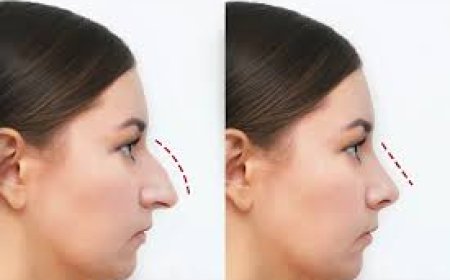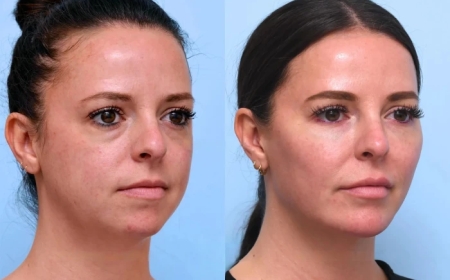Understanding Wound Health: What Separates Healing from Harm
Understand the difference between a healthy vs infected wound. Learn how wounds heal, what warning signs to watch for, and tips for promoting safe, effective healing.

Whether from a minor scrape, surgical procedure, or a chronic health issue, wounds are a part of life. Most people expect wounds to heal on their own, but not all wounds follow a smooth path to recovery. Sometimes, what begins as a small injury can escalate into a significant medical concern if not properly monitored. Thats why it's crucial to understand the difference between a healthy vs infected woundbecause knowing what separates healing from harm can protect your health and even save your life.
In this article, well explore the science of wound healing, how to differentiate between normal and abnormal healing processes, what causes wound infections, and what steps you can take to promote safe recovery.
The Four Stages of Wound Healing
A wound doesn't just closeit undergoes a complex biological process. Healing typically occurs in four predictable stages:
1. Hemostasis
This is the bodys immediate response to injury. Blood vessels constrict, and clotting begins to stop bleeding and form a scab.
2. Inflammation
White blood cells arrive at the wound site to destroy bacteria and remove dead tissue. Redness, swelling, and mild pain are common at this stage.
3. Proliferation
New tissue begins to form. Granulation tissue (pink or red and moist) fills in the wound, and skin cells regenerate.
4. Maturation (Remodeling)
The final stage strengthens the new tissue. Over time, collagen production reshapes and strengthens the wound, eventually fading the scar.
When this sequence happens without disruption, you have a healthy wound. When the process is stalled or overwhelmed by infection, you end up with an infected wound.
Healthy vs Infected Wound: Whats the Difference?
Understanding the distinction between a healthy and an infected wound is the first step in preventing complications. Here are the signs to help you tell them apart.
Characteristics of a Healthy Wound
-
Redness: Mild redness surrounding the wound is normal and usually fades after a few days.
-
Swelling: Slight swelling is part of the inflammatory response but should gradually decrease.
-
Drainage: Clear or light yellow fluid (serous fluid) is a natural byproduct of healing.
-
Pain: A manageable level of pain is expected and should improve daily.
-
Appearance: New tissue may appear pinkish, and a scab often forms to protect the wound.
-
No odor: There should be no foul smell coming from the wound.
Characteristics of an Infected Wound
-
Persistent or spreading redness: Infection can cause redness that extends beyond the wounds edges.
-
Increased swelling: Swelling that worsens instead of improves is a warning sign.
-
Discharge of pus: Thick, yellow, green, or brown discharge may indicate an infection.
-
Worsening pain: Instead of improving, pain becomes sharp, throbbing, or more intense.
-
Heat around the wound: The skin may feel hot or warm to the touch.
-
Foul odor: Infections often produce a strong, unpleasant smell.
-
Fever or fatigue: Systemic symptoms suggest that the infection may be spreading.
What Causes Wound Infections?
A wound becomes infected when harmful microorganismsusually bacteriaenter the site and overwhelm the immune system. Several factors can increase the risk:
-
Inadequate wound cleaning
-
Poor hygiene or contaminated dressings
-
Foreign objects embedded in the wound
-
Underlying health issues (e.g., diabetes, immune deficiencies)
-
Smoking or poor circulation
-
Excessive moisture or exposure to dirty environments
Recognizing the difference between a healthy vs infected wound helps in early detection and treatmentpreventing further harm.
The Importance of Early Detection
An untreated wound infection can escalate into more severe conditions such as:
-
Cellulitis: A bacterial skin infection that spreads rapidly
-
Abscess: A collection of pus that forms deep in the tissue
-
Sepsis: A potentially life-threatening condition caused by the body's response to infection
-
Delayed Healing: Infection slows the healing process and may result in chronic wounds
By monitoring wounds closely and knowing what to look for, you can intervene early and avoid these complications.
Best Practices for Promoting Wound Healing
Whether youre caring for a cut, post-surgical wound, or pressure ulcer, proper wound care is essential. Here are proven practices to promote healing and prevent infection:
1. Clean the Wound Promptly
Use clean water or saline to flush out dirt and debris. Avoid using hydrogen peroxide or alcohol, which can damage healthy tissue.
2. Apply Antiseptic or Antibiotic Ointment
Over-the-counter topical treatments help reduce the risk of bacterial growth.
3. Cover with a Sterile Bandage
Keeping the wound protected helps maintain a moist healing environment and blocks out bacteria.
4. Change Dressings Regularly
Dressings should be changed at least once a day, or more frequently if they become wet or soiled.
5. Keep the Area Dry and Clean
Avoid soaking the wound in water (e.g., during baths) and pat it dry gently after cleaning.
6. Watch for Signs of Infection
Check the wound daily for changes in color, size, discharge, or increased pain.
7. Maintain a Healthy Diet
Good nutrition supports the bodys ability to heal. Focus on protein, vitamin C, zinc, and hydration.
8. Avoid Smoking
Smoking restricts blood flow and slows tissue repair.
Advanced Wound Care for At-Risk Individuals
For people with chronic health conditions or wounds that do not heal as expected, professional medical care may be required. Wound care specialists offer advanced treatments, including:
-
Debridement: Removal of dead or infected tissue to encourage healing
-
Negative Pressure Wound Therapy (NPWT): A vacuum dressing that promotes faster tissue growth
-
Hyperbaric Oxygen Therapy: Breathing pure oxygen in a pressurized room to boost healing in severe wounds
-
Bioengineered Skin Substitutes: Used in difficult-to-heal wounds like diabetic ulcers
Patients with diabetes, vascular disease, or a history of infection may especially benefit from these interventions.
When to Seek Medical Attention
Contact a healthcare provider immediately if you notice any of the following:
-
Pus or unusual discharge
-
Fever, chills, or body aches
-
Red streaks radiating from the wound
-
Wound edges that appear black, mushy, or dying
-
Increased pain or swelling
-
No improvement after 57 days
These signs may indicate a worsening infection or impaired wound healing and should not be ignored.
Conclusion: Know the Difference, Heal with Confidence
Wound healing is a natural and remarkable process, but it's not one to take lightly. The line between recovery and risk lies in understanding the signs of a healthy vs infected wound. When you know what to expect from a wound thats healing properlyand what to watch for when things go wrongyou gain the power to act early and appropriately.
Healthy wounds are characterized by mild inflammation, minimal discharge, and a clear pattern of improvement. Infected wounds, by contrast, raise red flags such as worsening redness, swelling, pus, and systemic symptoms like fever.
By following best practices in wound care, maintaining proper hygiene, and seeking help when needed, you can significantly reduce the risk of infection and complications. Prioritize your wound health todaybecause a small act of care can make a big difference in your long-term well-being.






























